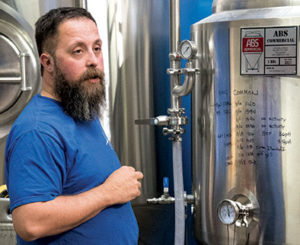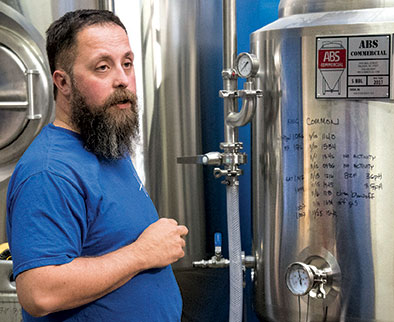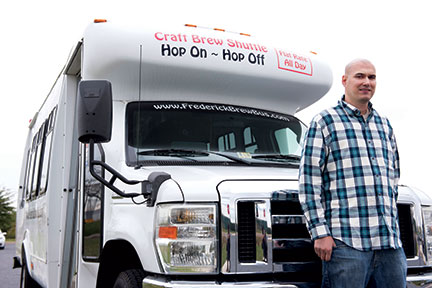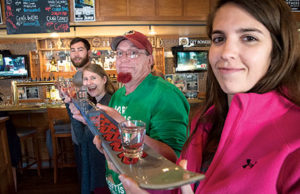
Joe Idoni, founder House Cat Brewing in Frederick, said sour is a ‘polarizing’ beer flavor. (Dan Gross)
BY KEVIN SMITH
I like to think of myself as an equal opportunity beer drinker. I can happily enjoy just about any style of brew, provided it’s well made. That said, I understand that due to their different flavor profiles, some styles evoke seriously unpleasant reactions. Judging by online chats and memes, pumpkin beer tops that list and sours run a close second.
Even so, sour beer has gained a cult following—one big enough that many brewers have started to produce their own takes on the style. Antietam Brewery in Hagerstown recently released a limited run Berliner Weisse, a low-ABV traditional German sour. In Frederick, Barley & Hops produced Lemon Party kettle sour and Monocacy Brewing Company released two sours this year. And the folks down in Berlin, Maryland, at Burley Oak Brewing Company have their J.R.E.A.M. line of sours that inspired beer fans from across the state to head down to that beach community even during the off-season.
I count myself a fan of the tart brews, but I know that even those who produce them realize that sour beers struggle to gain a broad audience.
“Sour is definitely a polarizing flavor,” said Joe Idoni, the brewer and founder of Frederick’s House Cat Brewing, which is slated to open this spring on Industry Lane. “Since most of the tartness comes from lactic acid, people can register it as milk that has gone bad,” he said.
Sour beer is complex, and that complexity is important. “What we want people to taste is that that tartness can accentuate the other flavors in the beer: tropical fruit, such as mangoes, pineapple, coconut; stone fruit like cherries, peaches, pomegranate; and earthiness, [including potential notes of] hay, petrichor [that smell after the first rain on the heels of a dry spell], minerality, and many others,” Idoni said.
Newcomers to the style should be prepared for something different, said Kevin Blodger, co-founder and director of brewing operations at Union Craft Brewing in Baltimore.
“While it is beer,” he explained, “these are flavors not found in most conventional beers. But at the same time, there are familiar flavors to be found, from lemonade-like tartness, to pickle juice characteristics, to some vinous notes. Don’t judge all sours by the first one you have. Just like other beers, there are some styles you like and some you don’t. [You] just need to figure out what works for you.”
The layperson should know the difference between a kettle sour and a barrel-aged sour, said Burley Oak founder Bryan Brushmiller.
“They both take technique,” he said. With the levels of complexity of a wood-barrel-aged sour, you could drink it “like a fine wine. For a kettle sour…it’s like adding lemon to a dish. [They are] two totally different animals to me.”
Blodger expounded.
“The differences between kettle sours and wilds and barrel aged sours are…kettle sours are done pretty quick…until the level of sourness is achieved then that wort is boiled to kill the bacteria,” he said. “Wilds are spontaneously fermented or fermented with bacteria cultures, and it can take some time for the flavor to develop.” Barrel-aged sours “can be made with finished beer that has bacteria added to develop the sour flavor. Again, it can some time to develop.”
These longer fermentations tend to result in more complex brews, said Brushmiller.
“Everyone should try sour beers because of the complexity they demonstrate,” Blodger said. “The sour flavor plays so well with hops and fruit that the possibilities are endless. Not everyone has to like them. There is so much different beer out there that everyone can find something to like.”





